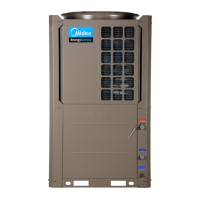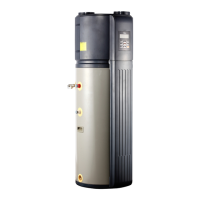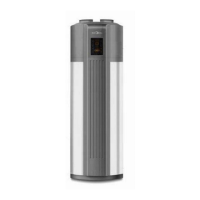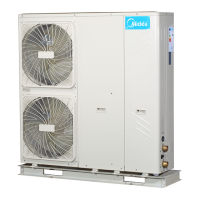MCAC-HTSM-201906 Midea R410A Direct Heating Type HPWH 50Hz Technical Manual
48
Figure 3-2.6: Lifting of RSJ-800/SZN1-H
2.3 Unit installation caution
The unit can be installed on the ground or on the suitable roof, but enough ventilation volume should be
ensured in both cases.
The unit should not be installed where noise and vibration are required to a certain extent.
The installed unit should be sheltered from direct sunlight as much as possible, and be far away from
boiler flues and ambient air which may erode condenser coils and copper tube parts of the unit, such as
the places that full of dust and oil fume.
Safety measures of isolation should be taken, such as rail guards. These measures will avoid artificial
damages and accidental damages.
The height of the installation foundation for the unit should not be less than 100mm, and floor drains
are required in installation sites, to ensure smooth drainage and remove any seeper.
In case of installation on the ground, the steel base of the unit should be located on the concrete
foundation, and the concrete plinth should extend below frozen soil layer. The foundation of the unit
should not be connected to the foundation of the building, to avoid affecting the people due to transfer
of noise and vibration. The base of the unit is provided with installation holes, which can be used to
connect the unit and the foundation firmly.
In case of installation on the roof, the roof must possess enough strength to sustain weight of the unit
and maintenance personnel. The unit can be supported on concrete foundations or channel steel frames
similar to those used in the unit installation on the ground. The load-bearing channel steel must be in
alignment with the installation holes of the unit damper, and the channel steel should posses enough
width for installing the damper.
Consult the building contractor, the archietectural designer or other specialists about the cased with
special installation requirements.

